Correlation
Introduction to Statistics in R

Maggie Matsui
Content Developer, DataCamp
Relationships between two variables
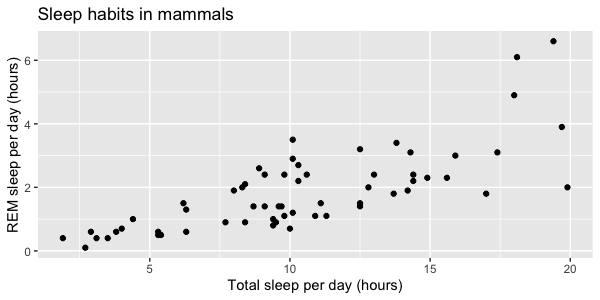
- x = explanatory/independent variable
- y = response/dependent variable
Correlation coefficient
- Quantifies the linear relationship between two variables
- Number between -1 and 1
- Magnitude corresponds to strength of relationship
- Sign (+ or -) corresponds to direction of relationship
Magnitude = strength of relationship
0.99 (very strong relationship)
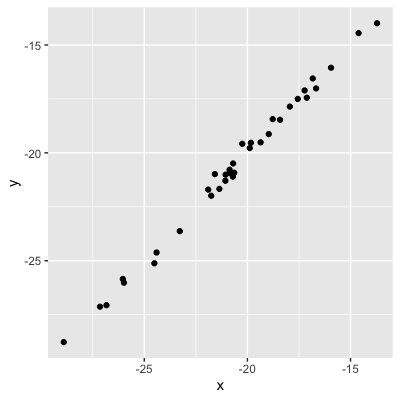
Magnitude = strength of relationship
0.99 (very strong relationship)

0.75 (strong relationship)
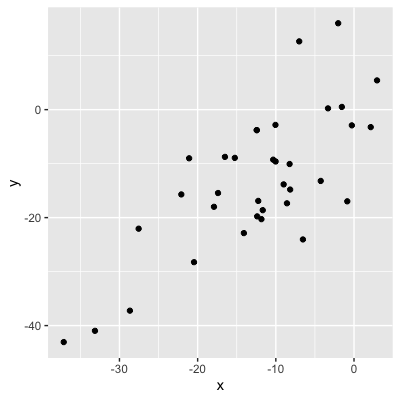
Magnitude = strength of relationship
0.56 (moderate relationship)
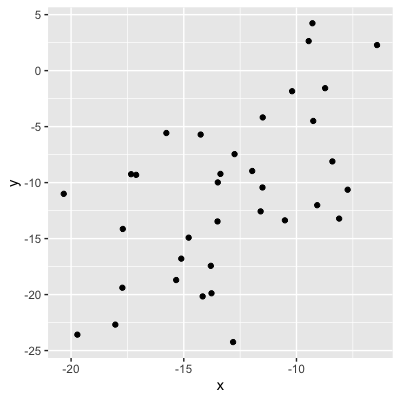
Magnitude = strength of relationship
0.56 (moderate relationship)

0.21 (weak relationship)
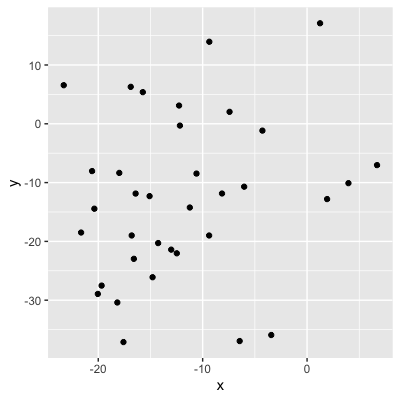
Magnitude = strength of relationship
0.04 (no relationship)
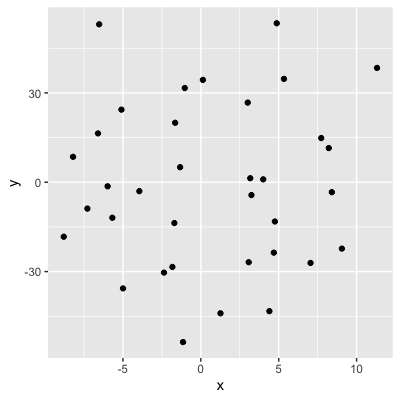
- Knowing the value of
xdoesn't tell us anything abouty
Sign = direction
0.75: as x increases, y increases

-0.75: as x increases, y decreases
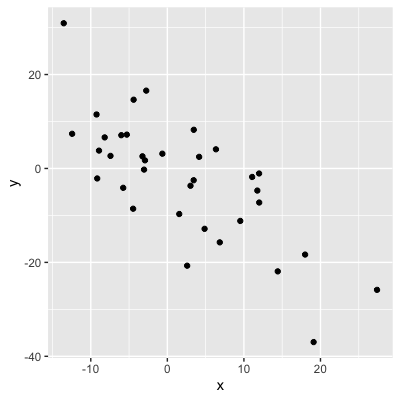
Visualizing relationships
ggplot(df, aes(x, y)) +
geom_point()

Adding a trendline
ggplot(df, aes(x, y)) + geom_point() +geom_smooth(method = "lm", se = FALSE)
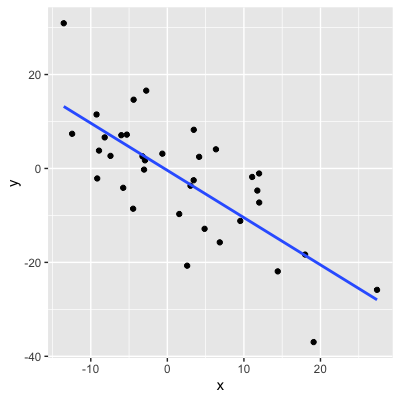
Computing correlation
cor(df$x, df$y)
-0.7472765
cor(df$y, df$x)
-0.7472765
Correlation with missing values
df$x
-3.2508382 -9.1599807 3.4515013 4.1505899 NA 11.9806140 ...
cor(df$x, df$y)
NA
cor(df$x, df$y, use = "pairwise.complete.obs")
-0.7471757
Many ways to calculate correlation
- Used in this course: Pearson product-moment correlation ($r$)
- Most common
- $\bar{x} =$ mean of $x$
$$ r =\frac{\sum ^n _{i=1}(x_i - \bar{x})(y_i - \bar{y})}{\sqrt{\sum ^n _{i=1}(x_i - \bar{x})^2} \sqrt{\sum ^n _{i=1}(y_i - \bar{y})^2}} $$
- Variations on this formula:
- Kendall's tau
- Spearman's rho
Let's practice!
Introduction to Statistics in R

